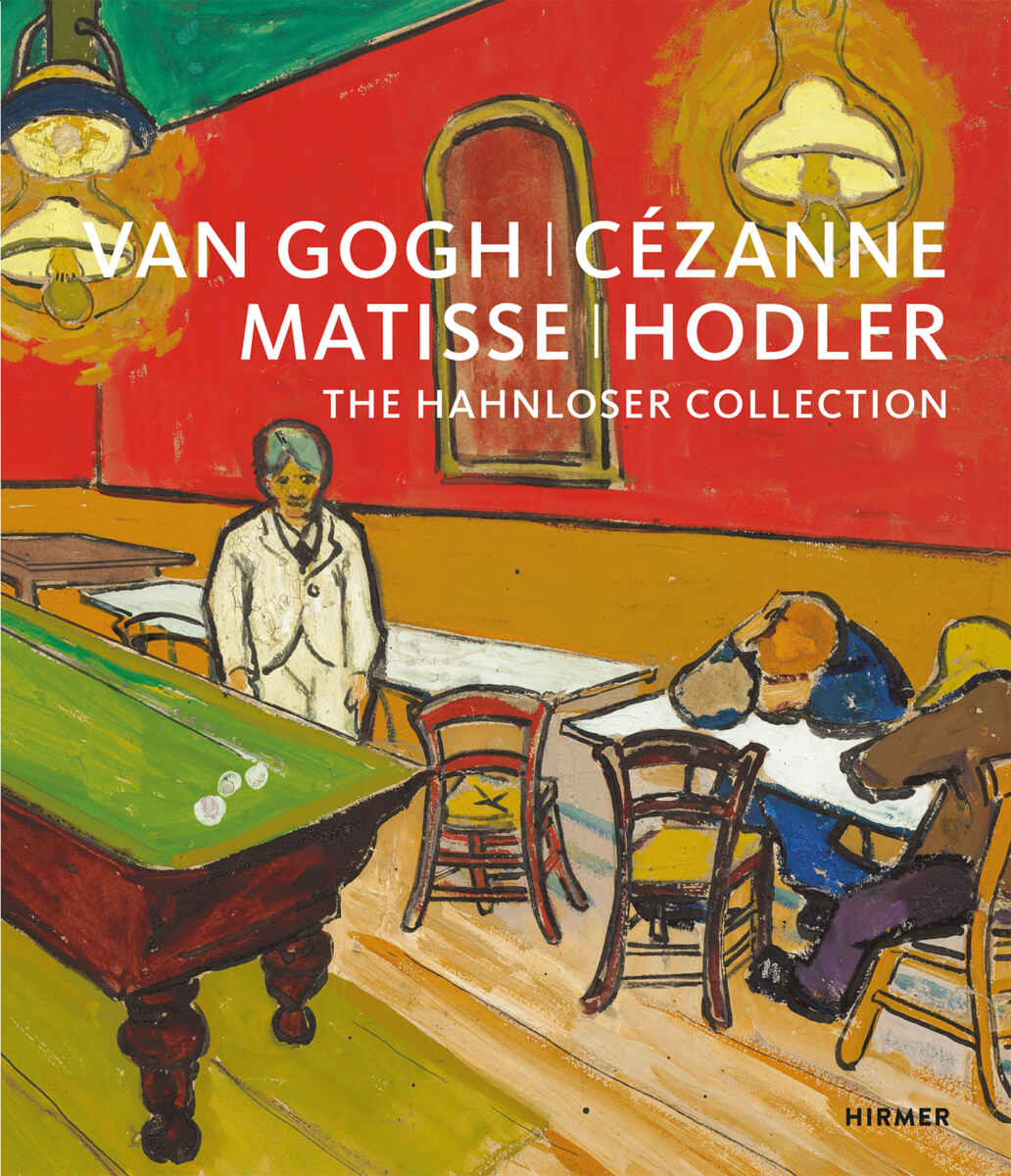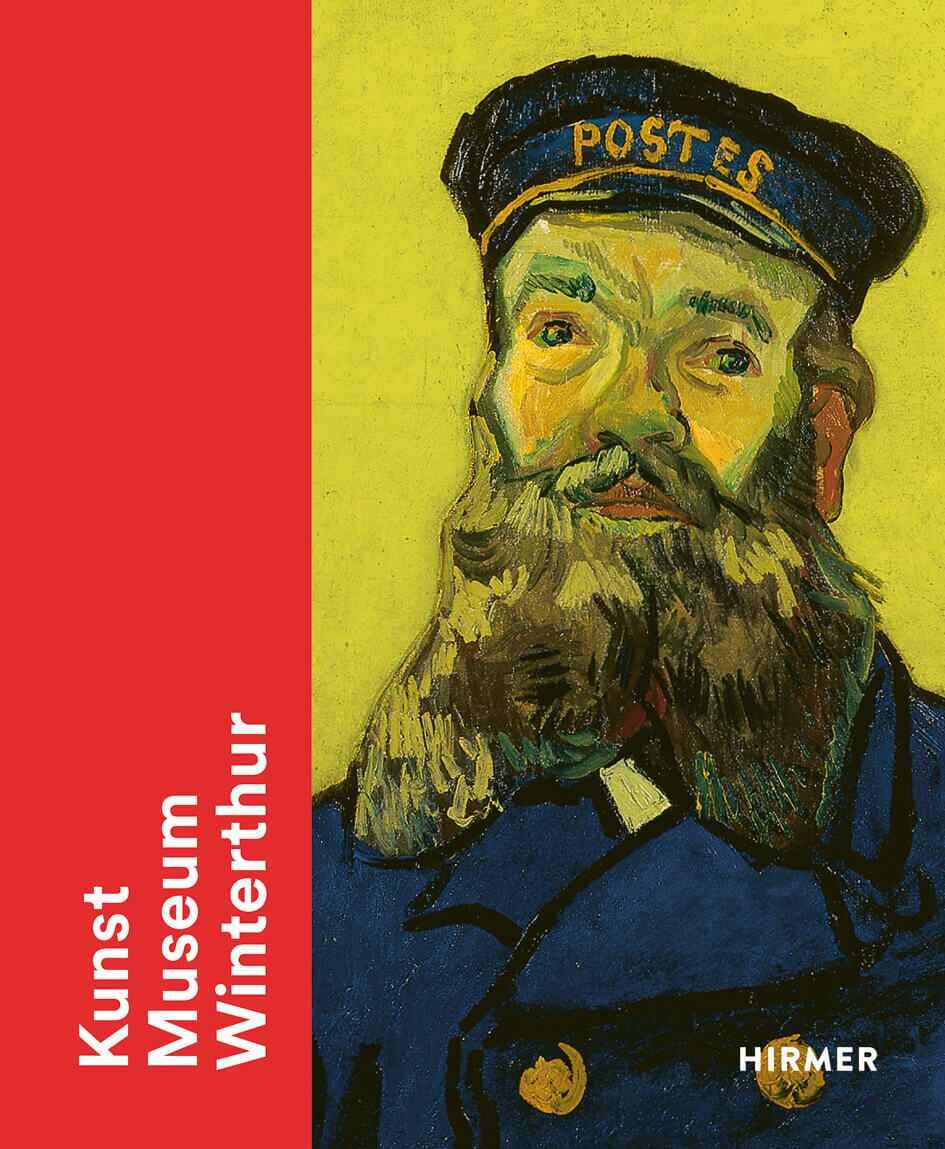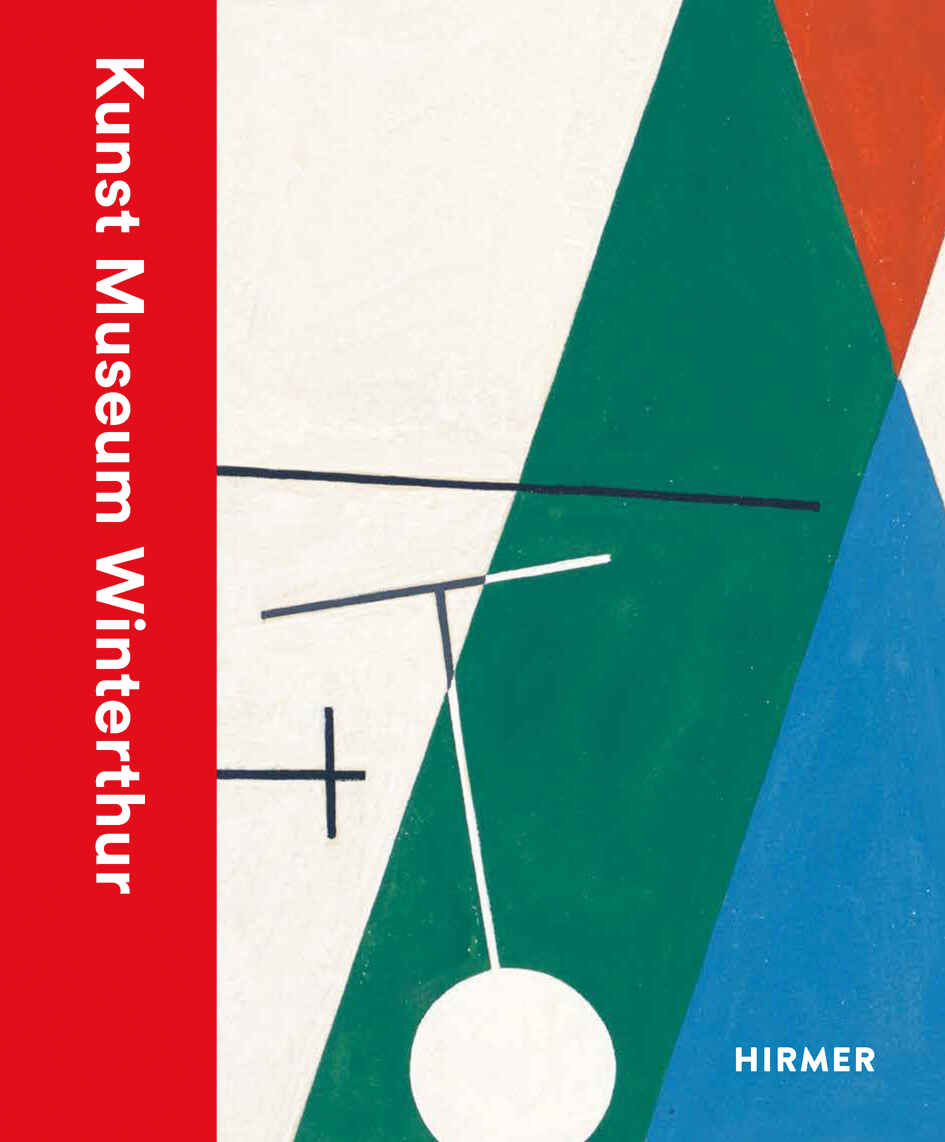
Following the merger of three important Winterthur collections to form the Kunst Museum Winterthur and the March 23, 2024 official reopening of Villa Flora after a renovation which cost CHF 11 million, a lavishly illustrated catalogue book with substantial essays presents 200 highlights of the three museums collected over many decades by the Kunstverein Winterthur, the Oskar Reinhart Foundation and the Hahnloser/Jäggli Foundation.
The catalogue offers reproductions of and information about masterpieces of classical painting, sculpture and graphic art as well as more recent media such as video works and installations by Rembrandt van Rijn, Jacob van Ruisdael, Caspar David Friedrich, Vincent van Gogh, Ferdinand Hodler, Giovanni Giacometti, Max Liebermann, Max Beckmann, Claude Monet, Edouard Manet, Félix Vallotton, Pierre Bonnard, Edouard Vuillard, Piet Mondrian, Sophie Taeuber-Arp, Pablo Picasso, Alberto Giacometti, Giorgio Morandi, Lucio Fontana, Maria Lassnig, Isa Genzken, Gerhard Richter, Katinka Bock and many others. The collection spans from the Dutch Golden Age to German Romanticism and the 19th century, and from modernism to contemporary art.
Ed. Kunst Museum Winterthur, Konrad Bitterli, Andrea Lutz: Kunst Museum Winterthur: Two Hundred Masterpieces. With contributions by Konrad Bitterli, L. Kost, Andrea Lutz, D. Schmidhauser. Hirmer, March 2024, 300 pages with 260 illustrations, 24 × 29 cm, 9 1/2 × 11 1/2 inches, hardcover. Accept cookies to go directly to the book’s page (we earn a commission) at Amazon.com, Amazon.co.uk, Amazon.fr, Amazon.de.
The catalogue and the renovation of Villa Flora are the result of a joint effort by the Winterthur Art Society (Kunstverein Winterthur), the City of Winterthur and the Canton of Zurich, with the help of the historic monument conservation offices of the federal government and the Canton of Zurich, the Lottery Fund of the Canton of Zurich, the Foundation for Art, Culture, and History (Stiftung für Kunst, Kultur und Geschichte), the Dr. Werner Greminger Foundation, the Friends of the Reinhart, Briner and Kern Collections, the Oskar Reinhart Foundation, the Society of Friends of the Villa Flora as well as the Hahnloser/Jaeggli Foundation.
In the Kunst Museum Winterthur: Two Hundred Masterpieces catalogue, the director of the Kunst Museum Winterthur, Konrad Bitterli, and the collection curator, Andrea Lutz, explain that the new museum concept was adopted by the city parliament of Winterthur in 2017. The merging of the three institutions—the Kunstmuseum Winterthur, the Oskar Reinhart Museum, and the Villa Flora—took place under the auspices of the Winterthur Art Society. This was preceded in 2016 by the complete integration of the Briner and Kern Museum, which had opened in 1970, into the former Oskar Reinhart Museum. Since 2018, the three museums have been organized as the Kunst Museum Winterthur—albeit initially without the Villa Flora, which had to undergo extensive renovation.
In 2020, Matthias Frehner curated the Albertina in Vienna exhibition Van Gogh, Cézanne, Matisse, Hodler: The Hahnloser Collection (catalogue: Hirmer, Albertina, 2020; accept cookies—we receive a commission—to order the English edition of the catalogue from Amazon.com, Amazon.co.uk, Amazon.de, Amazon.fr), which presented roughly 120 masterpieces of the collection assembled by Arthur Hahnloser (1870–1936) and his wife Hedy Hahnloser-Bühler (1873–1952) between 1907 and 1936.
The Hahnloser Collection was created in direct contact with several contemporary artists of the early 20th century. Konrad Bitterli notes that the Swiss painters Ferdinand Hodler and Giovanni Giacometti were among Hedy’s and Arthur’s first artist friends, and their works built the starting point for the couple’s collecting activities. However, their focus quickly shifted to the latest art of the day: the Nabis and the Fauves.
Giocanni Giacometti would introduce the collectors to the works of Vincent Van Gogh and the French Impressionists. Félix Vallotton—in addition to Pierre Bonnard, the central figure in the Hahnloser collection—was probably their closest artist-confidant. He established decisive contacts with other artists and gallery owners.
Hedy and Arthur Hahnloser focused on Pierre Bonnard, Edouard Vuillard, Félix Vallotton, whose major work The White and the Black (1913) they secured for their private collection, as well as on sculptures by Aristide Maillol and paintings and other works by Henri Matisse and Albert Marquet. An extensive inheritance enabled them to acquire important works by art-historically relevant precursors such as Odilon Redon, Paul Cezanne and Vincent van Gogh, whose The Sower (1888) and The Night Café in Arles (1888) are among the highlights of the present-day Hahnloser Collection.
Félix Vallotton provided the connection to Pierre Bonnard and Henri Manguin, and it was through Vallotton that Pierre Henri Matisse, Aristide Maillol and Odilon Redon were admitted to the couple’s circle of friends.
In 1908, the couple bought their first work from Odilon Redon: Le rêve (La pensée). It can be admired in the current reopening exhibition at Villa Flora, presenting 69 of the roughly 400 works of the Hahnloser Collection (until January 5, 2025).
At the beginning of the 20th century, as president of the Art Society, Hedy’s cousin Richard Bühler took on the role of curator, contacted the leading art dealers via the Winterthur painter Carl Montag, who was working in Paris, and corresponded personally with collectors of French painting in Switzerland, such as Sidney Brown in Baden and Hans Schuler in Zurich.
In 1916, at the newly opened Kunstmuseum Winterthur, it was the Winterthur Art Society’s Exhibition of French Painting (Ausstellung französischer Malerei), with around 200 paintings from the Impressionists to the Fauves, which made a decisive contribution to help French modernism achieve a breakthrough in Switzerland.
In an essay in Kunst Museum Winterthur: 200 Masterpieces (Amazon.com, Amazon.co.uk, Amazon.fr, Amazon.de), Konrad Bitterli writes that the families of both Hedy and Arthur Hahnloser had made a fortune in the textile industry. Arthur was the son of a textile merchant, while Hedy Bühler was the daughter of an industrialist who ran various spinning mills in the Winterthur region.
In 1898, following Arthur’s studies in medicine and his training as an ophthalmologist, the two married and settled in the Villa Flora, which previously had been the home of Hedy’s grandparents. Arthur and Hedy Hahnloser ran an ophthalmic clinic in the downstairs rooms until 1908.
Previously, Hedy Bühler had studied at the St. Gall School of Design for Industry and Trade and at the painting school in Gauting near Munich. In Munich, she had close contacts to artists of The Blue Rider (Der Blaue Reiter) group.
After her return and marriage, Hedy Hahnloser-Bühler supported her husband in setting up and running the clinic. In 1899 and 1901, their son Hans and daughter Lisa were born. Konrad Bitterli stresses that, from 1905, the Villa Flora became a meeting place for a small society of art lovers who gathered over the legendary “Revolutionary Café” to discuss modern art and architecture. The circle included numerous personalities from cultural life: the architect Robert Rittmeyer, Jules de Praetere, director of the Kunstgewerbeschule Zurich, and the textile industrialist Richard Bühler, later president of the Art Society, founding president of the Gallery Society and cousin of Hedy.
In 1907, together with other open-minded art lovers, they were instrumental in replacing the old guard on the Art Society’s board and promoting the collection’s focus on French modernism. Konrad Bitterli stresses that, with the support of Richard Bühler, Hedy and Arthur Hahnloser determined the direction of the Art Society for many years.
With the reopening exhibition Bienvenue! Meisterworks by Cézanne, van Gogh and Manet, the Villa Flora shows 69 of the current collection’s roughly 400 works, including paintings, drawings, watercolors, sculptures and graphic works.
The Hahnloser Collection used to be even larger. Of the 69 works of art currently exhibited at the Villa Flora, several are in private hands. Not on view in Winterthur and in a private collection is the fabulous still life oil painting Apples and Bowl (1888) by Paul Gauguin, which could be admired during the 2020 Albertina show. Also exhibited in Vienna was the watercolor over pencil on paper Still Life with Cut Water Melon (ca. 1900) by Paul Cezanne, which is now part of the oustanding Fondation Beyeler in Riehen/Basel. Hedy and Arthur Hahnloser had bought the two fabulous still lifes in 1909/10 and in 1914 at Galerie Thannhauser in Munich. Maybe, they will be included in a future temporary exhibition at the beautifully renovated Villa Flora.
Konrad Bitterli notes that, from 1908 onwards, the collector couple Hedy and Arthur Hahnloser traveled regularly to Paris, where they met numerous artists and made friends over the years. These in turn visited the Hahnlosers in Winterthur, portrayed the family and painted scenes featuring the Villa Flora and its garden. Later, the Hahnlosers regularly spent their winters on the Côte d’Azur, where many of their artist friends had settled in the meantime.
In the early 20th century, women were not yet allowed on the board of the Winterthur Art Society. Therefore, Hedy Hahnloser worked mainly in the background—but, according to Konrad Bitterli, all the more influentially. She was a key figure who made it possible that the Swiss city of Winterthur developed into a center for French modernism. She had a decisive impact on the couple’s collecting activities, she brokered French art to numerous collectors in Winterthur, worked as a craftswoman and arts critic, wrote essays as well as a monograph published in 1936 that included a catalogue raisonné of Félix Vallotton’s works.
The couple managed to buy Félix Vallotton’s major work The White and the Black (1913). It can be admired in the current exhibition Bienvenue! Masterworks by Cézanne, van Gogh and Manet.
In the 2020 Albertina catalogue about the Hahnloser Collection, Matthias Frehner writes that, in collaboration with the architect Robert Rittmeyer, Hedy Hahnloser created an entire children’s room with furniture, toys, curtains, cushions, and tablecloths for the interior design and decoration exhibitions in Winterthur (1907) and Zurich (1908). She asked local artists for loans of new works to fill the bare walls of the exhibition pavilions. This act was her first public commitment to contemporary art and modernism.
At the same time, her husband Arthur was able to move his ophthalmological practice from the Villa Flora to the newly opened private hospital Am Lindberg. This created the opportunity to realize Robert Rittmeyer’s new interior design for the Villa Flora, and to adorn the white walls with new paintings. Arthur and Hedy immediately thought of Giovanni Giacometti, who had exhibited at the rotating exhibition in Winterthur in 1906, and of Carl Montag, their friend from Winterthur who had been living in Paris since 1903 and who had been instrumental in bringing the contemporary art of the early 20th century to their attention.
Hedy Hahnloser herself created wallpapers, curtains and other textiles for the Villa Flora. Together with Robert Rittmeyer of the Architekturbüro Rittmeyer & Furrer as well as her cousin Richard Bühler, she tranformed the Villa Flora and its garden according the latest fashion, which had an impact on the 1916 construction of the Kunstmuseum Winterthur. In subsequent years, notably in 1927, the Villa Flora was further transformed to suit the presentation of their art collection.
Arthur Hahnloser died in 1936. His wife stopped collecting. In 1952, after her death, the works were divided between the two children. In recent years, their heirs have transferred a large part of the paintings, sculptures, drawings and prints to the Hahnloser/Jaeggli Foundation in order to make them accessible to the public again at the Villa Flora, where the collection was once created.
Matthias Frehner wrote in 2020 that, in 1980, the generation of grandchildren set up the Hahnloser/Jaeggli Foundation, which at that time primarily comprised works from Lisa Jäggli’s share of the inheritance. Back then, the foundation’s holdings amounted to just over one hundred paintings, original works on paper and sculptures, as well as roughly 200 prints and the only complete edition of the Revue Blanche in Europe.
Matthias Frehner noted that, from 1995 to 2013, the Hahnloser/Jaeggli Foundation organized thematic exhibitions at the Villa Flora, which had been provisionally converted into a museum, with the inclusion of works that now belong to the grandchildren and great-grandchildren of the collectors. The foundation’s holdings were subsequently sent on an international exhibition tour through 2017. For a few years, the works had been stored at the Kunstmuseum Bern (where Matthias Frehner worked as museum director).
In 2018, the Villa Flora, largely preserved in its original state, was donated to the City of Winterthur by the great-granddaughters Beatrix Steiner-Martz, Theres Schwarz-Steiner and Annette Kündig-Steiner, on condition that it be made permanently accessible to the public. To the delight of art lovers, after an CHF 11 million renovation, the Villa Flora has reopened in March 2024.
Incidentally, the artist Paul Cezanne wrote his name and signed without accent aigu (é); for decades, French museums and media around the globe used the wrong spelling.
Ed. Kunst Museum Winterthur, Konrad Bitterli, Andrea Lutz: Kunst Museum Winterthur: Two Hundred Masterpieces. With contributions by Konrad Bitterli, L. Kost, Andrea Lutz, D. Schmidhauser. Hirmer, March 2024, 300 pages with 260 illustrations, 24 × 29 cm, 9 1/2 × 11 1/2 inches, hardcover. Accept cookies to go directly to the book’s page (we earn a commission) at Amazon.com, Amazon.co.uk, Amazon.fr, Amazon.de.
Albrecht Schröder, Matthias Frehner, ed.: Van Gogh, Cézanne, Matisse, Hodler: The Hahnloser Collection. Hirmer, Albertina, 2020. Accept cookies (we receive a commission) to order the English edition of the book from Amazon.com, Amazon.co.uk, Amazon.de, Amazon.fr.
On top of this page, the book cover Van Gogh, Cézanne, Matisse, Hodler: The Hahnloser Collection is showing Vincent van Gogh’s The Night Café in Arles, 1888; this work is part of the current Villa Flora reopening exhibition.
Below the cover of the German edition of the new, 2024 book Kunst Museum Winterthur. 200 Meisterwerke, showing Vincent van Gogh’s portrait of Joseph Roulin, 1888. Further below the English edition with an abstract, geometrical cover, showing a detail of Sophie Taeuber-Arp’s work Triangle, Circle, Circle Segments, and Lines, 1932; the Joseph Roulin portrait ornates the backside of the English edition cover. The van Gogh was a 1955 gift to the Kunstmuseum Winterthur beim Stadthaus by the heirs of the famous collector Georg Reinhart.



For a better reading, quotations and partial quotations in this exhibition and catalogue review have not been put between quotation marks.
Book / Catalogue / Exhibition review added on April 13, 2024 at 22:28 Swiss time. Details about the book covers added on April 14, 2024 at 19:53 and at 20:20.